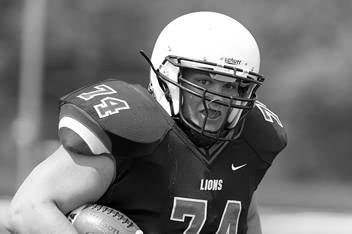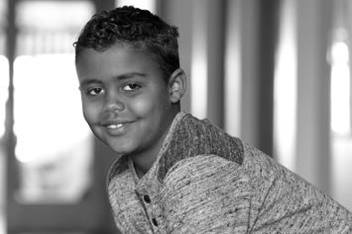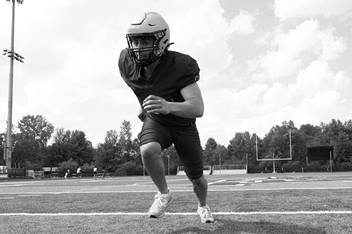Returning to Learn After Concussion: A Guide for School Professionals
Most children recover relatively quickly from a concussion, but some can have symptoms that last for weeks or even months. Even if the symptoms only last for a short time, they can impact learning activities, social and emotional functioning, and participation at school. That's why it's important for educators to consider each student's needs when they come back to school after a concussion.
How Do Concussions Impact Students at School?
Each child’s concussion symptoms can be different. Some children will have minimal symptoms, but for other children, their concussion symptoms can have a much greater impact on their functioning.
Not every child will have these problems, but it is important to know that concussion symptoms can include:
|
AREA |
COMMON SYMPTOMS |
EXAMPLES OF IMPACT AT SCHOOL |
|
Physical |
Headache, dizziness, balance problems, light and sound sensitivity |
|
|
Cognitive |
Memory problems, inattention, difficulty concentrating, slowed thinking, feeling mentally foggy |
|
|
Emotional |
Irritability, sadness, nervousness, being more emotional |
|
|
Sleep |
Trouble falling asleep, sleeping more than usual, or sleeping less than usual, fatigue |
|
Who Should Help Support Students and Develop a Plan for Returning To Learn?
A management team, including the student’s physician, athletic trainer, guidance counselor, teachers, school psychologist, school nurse and parents should be able to send the student a consistent message of treatment and support. Varying or mixed messages may cause the student unnecessary distress, so communication within the team is vital.
Do Children Need To Miss School While They Are Recovering From Their Concussion?
Older guidelines recommended complete rest after a concussion until symptoms fully resolve, such as staying in a dark room and trying to avoid all physical and cognitive activities, including school. We know now that complete rest and isolation should not be recommended after a concussion. In fact, total rest can even make symptoms last longer.
Instead, a period of rest during the first 24-48 hours is recommended, followed by gradual return to normal activities. During this phase of recovery, many normal activities are still OK as long as they don’t make symptoms worse. This applies to school attendance as well. Many students may need to miss a day or two of school right after their concussion. They should gradually resume typical participation in school as their symptoms improve. Accommodations and forming a “return to learn” plan (see below) can help students safely return to school even while they are still recovering from their concussion symptoms.
It is important to note that missing just a few days of school can be difficult for many students, particularly those with pre-existing learning or emotional difficulties. It can be isolating and lead to heightened stress related to catching up on missed material. Therefore, students should return to school as soon as they are able to tolerate attending without significantly worsening symptoms.
Most students (over 90%) fully return to school without need for additional supports by 10 days after their concussion.
Should Students Avoid Screens After a Concussion?
Screen time such as TV, watching videos, playing video games and doing schoolwork on the computer should be limited in the first one to two days after a concussion. After that, it is safe for children to return to normal screen use, while taking breaks as needed and monitoring for increases in symptoms.
For some children recovering from concussion, prolonged screen use can make their symptoms worse. For those children, limits on screen time should be considered. For example, students may be able to work on screens for shorter times, take breaks if symptoms start to increase and increase use as they can tolerate longer times.
What Is a Return To Learn Plan and Who Needs It?
Not all students will need formal school accommodations after concussion. However, a plan for gradually returning to normal school activities, called Return To Learn or (RTL), should be developed for those students with:
- Symptoms that get significantly worse while at school or while doing schoolwork
- Symptoms that get significantly worse with screen time
- New difficulties with reading, concentration, memory or other aspects of learning
Students should progress through the RTL steps as they are able. They should be able to tolerate the activities at each step without more than mild worsening of symptoms. Experiencing some symptoms at each step is normal (and is OK!) but symptoms should be mild and brief (last less than an hour) before moving to the next step.
From the Amsterdam Consensus Statement on Concussion in Sport:
|
STEP |
MENTAL ACTIVITY |
ACTIVITY AT EACH STEP |
GOAL |
|
1 |
Daily activities that do not result in more than a mild worsening of symptoms |
Typical activities during the day (e.g., reading) while minimizing screen time. Start with 5-15 minutes at a time and increase gradually |
Gradual return to typical activities |
|
2 |
School activities |
Homework, reading or other cognitive activities outside the classroom |
Increase tolerance to cognitive work |
|
3 |
Return to school (part time and/or with accommodations) |
Gradual introduction of schoolwork. May need to start with partial day or with greater access to rest breaks during the day |
Increase academic activities |
|
4 |
Return to school full time |
Gradually progress school activities until a full day can be tolerated without more than mild worsening of symptoms |
Return to full academic activities and catch up on missed work |
Patricios, J. S., Schneider, K. J., Dvorak, J., Ahmed, O. H., Blauwet, C., Cantu, R. C., ... & Meeuwisse, W. (2023). Consensus statement on concussion in sport: the 6th International Conference on Concussion in Sport–Amsterdam, October 2022. British Journal of Sports Medicine, 57(11), 695-711.
What Types of Academic Supports Should Be Considered?
Many students will need temporary academic supports and accommodations to help as they progress through the Return to Learn process. These can include:
- Environmental Supports: modified school attendance, frequent rest breaks from cognitive/thinking/desk work tasks, reduced screen time
- Physical Adjustments: avoiding activities with risk for contact, collision, or falls (e.g., restriction from contact sports or games during PE, recess, or after school activities) while still allowing for safe non-contact physical activity
- Curriculum Adjustments: extra time to complete assignments, reduced workload, copies of class notes
- Testing Adjustments: delaying tests/quizzes or allowing extra time to complete them
Other more specific accommodations can be considered based on the physician recommendations or identification of individualized needs: These may include:
|
AREA |
COMMON SYMPTOMS |
EXAMPLES OF ACCOMMODATIONS TO CONSIDER |
|
Physical |
Headache, dizziness, balance problems, light and sound sensitivity |
|
|
Cognitive |
Memory problems, inattention, difficulty concentrating, slowed thinking, feeling mentally foggy |
|
|
Emotional |
Irritability, sadness, nervousness, being more emotional |
|
|
Sleep |
Trouble falling asleep, sleeping more than usual, or sleeping less than usual, fatigue |
|
Need for More Formal Supports
For most students, school accommodations after a concussion should be considered temporary and gradually reduced as symptoms improve and as they are able to tolerate normal participation. However, for some students with persistent post-concussion symptoms, it may be necessary to implement more formal academic accommodations and supports, such as those offered through a Section 504 Plan. For students with persistent difficulties and more long-standing academic needs, working with their medical providers (physicians, neuropsychologists, etc.) is essential to develop a plan designed to meet their individualized needs.
Other Evaluations for Students With Higher Levels of Need
If a student is experiencing academic problems after a concussion that are lasting much longer than typical, then further evaluations may be needed. For these students, a specialized evaluation with a neuropsychologist can be helpful. Neuropsychological evaluations involve detailed testing of cognitive and learning skills as well as emotional and behavioral functioning. These evaluations can be helpful when developing a plan for academic supports and other treatments.
Returning to PE, Sports and Other Physical Activities
Students must be cleared by their treating physician to return to contact sports and activities, such as participating in contact activities in gym class or recess. Learn more in our parent's concussion guide.



